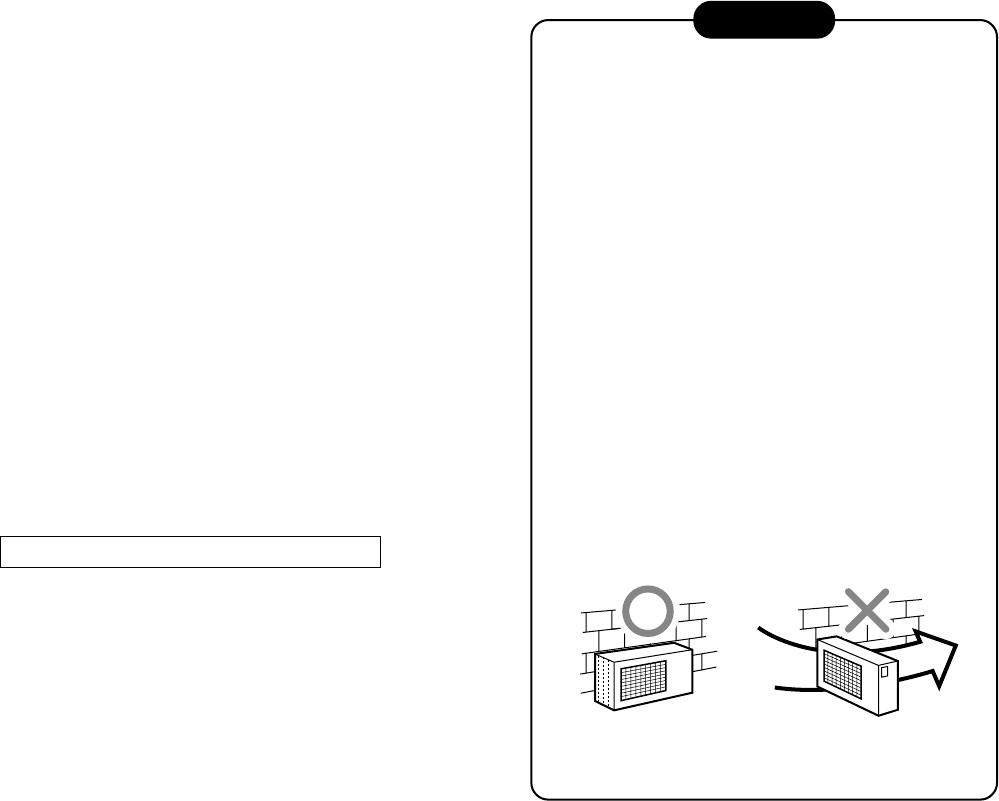
– 60 –
10-4. Outdoor Unit
10-4-1. Installation Location
• A location which provides enough space around the
outdoor unit as shown in the diagram.
• A location which can bear the weight of the outdoor
unit and does not allow an increase in noise level
and vibration.
• A location where the operation noise and discharged
air do not disturb neighbors.
• A location which is not exposed to a strong wind.
• A location free of combustible gases.
• A location which does not block a passage.
• A location where the drain water does not cause any
problems.
• Depending on snow level, use a field fabricated ice
or snow stand.
• When the outdoor unit is to be installed in an elevated
position, be sure to secure its feet.
Precautions for adding refrigerant
• Use a scale having a precision with at least 10 g
per index line when adding the refrigerant.
Do not use a bathroom scale or similar instrument.
• Use liquid refrigerant when refilling the refrigerant.
Since the refrigerant is in liquid form, it can fill
quickly.
Therefore, perform the filling operation carefully
and insert the refrigerant gradually.
CAUTION
1. Install the outdoor unit without anything
blocking the discharging air.
2. When the outdoor unit is installed in a place
always exposed to strong winds like on the
coast or on a high story of a building, secure
the normal fan operation using a duct or a
wind shield.
3. Especially in windy areas, install the unit to
prevent the admission of wind.
4. Installation in the following places may result
in trouble.
Do not install the unit in such places.
• A place full of machine oil.
• A saline-place such as the coast.
• A place full of sulfide gas.
• A place where high-frequency waves are
likely to be generated, such as from audio
equipment, welders, and medical equip-
ment.
Fig. 10-4-1
Strong
wind
FILE NO. SVM-10019


















